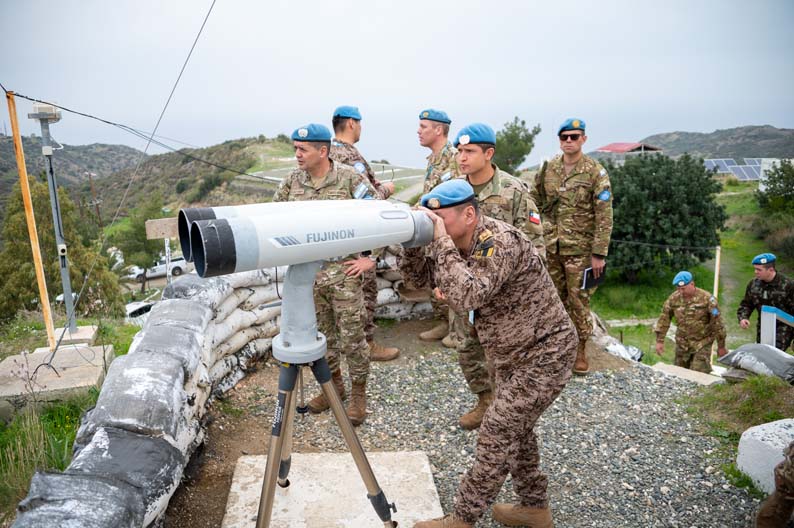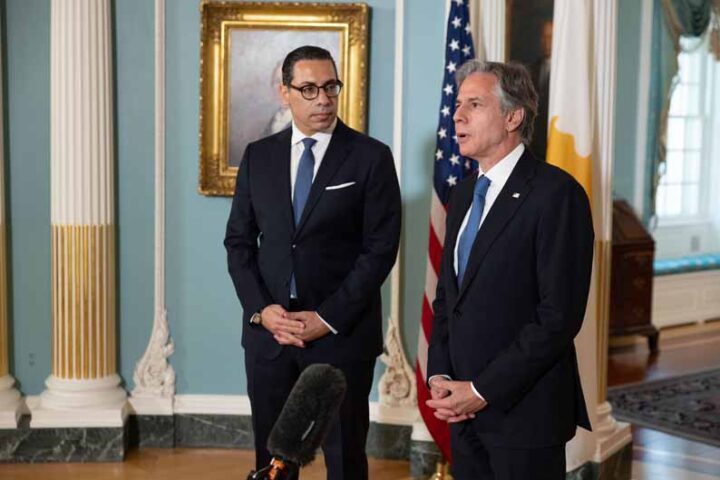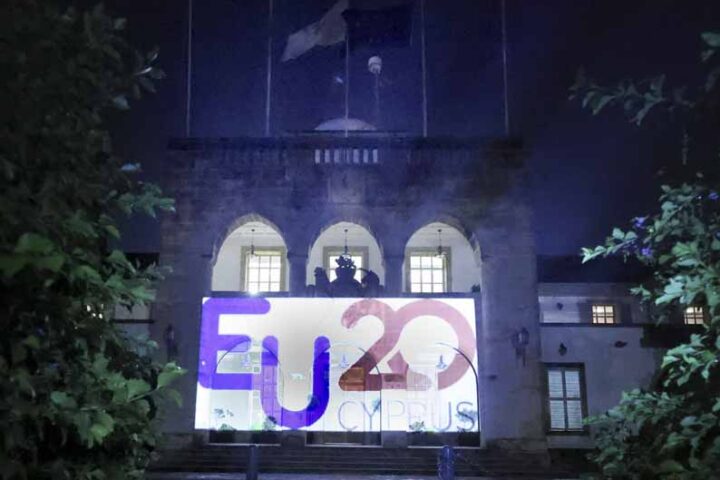A few weeks ago I wrote an article in this newspaper entitled “Deliberative democracy: only way out of the Cyprus problem?” I argued that the historical process design for solving the Cyprus problem is doomed to fail and that democratising the process might get us to a better result.
I had three main reactions to the article.
First, no one argued with the notion that the process design is flawed. Second, some argued that we did not need the “citizens’ assembly” I had recommended but an “elected assembly”—one in which political parties but also other interest groups could stand for election to take part in. Third, almost everyone wondered how on earth you would get the political leaderships on both sides to agree to any kind of revised process.
This article seeks to address that third question by laying out the steps to a new process that is not seen as threatening by the political leaderships on all sides.
Unresolved conflict is a very real threat
First, let me underline why the not-so-frozen conflict is a serious risk to people living on the island and cannot be left to fester.
The growing risks in the buffer zone are not publicised very much, no doubt for feat it would send investors to the exits. But you only have to read the January report of the UN Secretary-General on the UN Peacekeeping Force in Cyprus (UNFICYP) to understand how precarious the situation is in the UN-monitored buffer zone. The buffer zone is contested pretty much daily, with UN report noting that “the mission observed a total of 302 military violations by both sides, of which 159 were considered serious”.
One can easily imagine how badly things might go. It is only because of huge efforts put in by the UN and others that these have not escalated. The unresolved Cyprus problem is therefore an ongoing threat to internal and international security.
- Simplify the aim
The first step in getting everyone on board is to simplify what is trying to be achieved. We need something that everyone can agree on. At present we have no agreement on the principle of a “bizonal bicommunal federation (BBF)”. Even if we did, successive failures have underlined that there is no agreement on that the “content” of such a BBF should be.
To simplify the aim to one that everyone can agree on, we start with the above premise: the “frozen” conflict in Cyprus is an ongoing threat to internal and international security. It is therefore in everyone’s interests that we find a way to “end” the problem.
From there we redefine the aim as follows: “a negotiated settlement on the island of Cyprus that results in the long-term reduction of internal and international security risks”. Let me unpack that a little more.
The word “settlement” means that the Cyprus problem is ended via this process. The word “negotiated” means it is not done under duress for either side, so it is not done “with a gun against our heads”.
The words “long-term” mean that the settlement reached must be viable and resilient to shocks.
The word “internal” relating to security risks means that people living on this island must feel safer about “what the other side might do” than they do today.
The word “international” means that it reduces risks of conflict not just within the buffer zone but also at sea. This way the international community (primarily the UN, US and EU and arguably others too) no longer have to spend enormous diplomatic resources on ensuring that the not-so-frozen conflict does not escalate into bloodshed.
- Accept the principle of democratisation
The second premise is to accept the principle that a more inclusive process will have a greater chance of achieving the aim, namely “a negotiated settlement on the island of Cyprus that results in the long-term reduction of internal and international security risks”.
I argued why a negotiated settlement would have a higher chance of success in my previous article. But in brief, the main reason is because it allows political leaders to share the burden of extremely difficult decisions with their voters: the people who put them in power in the first place.
- Accept this is scary for politicians
Nevertheless, we must also accept that political leaders will not jump at a deliberative democracy process.
A more inclusive, deliberative process can only be successful if it is designed in such a way that is unthreatening to the political leaderships of interested parties. Here I include not only the Greek Cypriot and Turkish Cypriot leaders but political parties in both communities, the guarantor powers (Greece, Turkey and the UK) and any other international actor that might scupper the process if they fear it will not meet their interests.
- Plan it in small increments
How do we get the political leaders and the political parties that surround them comfortable with a newly designed process? The answer is to take is slowly, moving in small increments. I have thought of no fewer than 17 steps from today to “a negotiated settlement on the island of Cyprus that results in the long-term reduction of internal and international security risks”. Let me run through them.
Steps 1-4 brainstorming and initial options
Step 1 is to gather all of the Cyprus problem geeks for a brainstorm on how to redesign the negotiations process in a way that reduces internal and international security risks; is unthreatening to the political leaderships of interested parties; and meets the expectations of today’s voters (is democratic and inclusive). Note that this group does not discuss the content of a solution, only the process design.
Yes, this does mean that you have to start with the “usual suspects”. Why? Because they are the only ones who obsess on the Cyprus problem daily and therefore understand all of its intricacies. But bear with me. We will broaden this out. This is just the first of 17 steps.
Step 2 is that this group prepares practical, implementable options that meet the requirements outlined in Step 1. (I also have a whole bunch of ideas about the kinds of questions that would need to be answered to achieve this.)
Step 3 is to receive feedback on these options from those with international expertise on other negotiated processes elsewhere in the world. There is lots of expertise out there. Step 4 is to adapt the options based on that feedback.
Steps 5-7 get voter and stakeholder input
Step 5: through focus groups, surveys and so on, a core team (or potentially the UN) would receive feedback from the general public in Cyprus on the options for the new process design.
Step 6: the core group shares the outcomes with involved parties (Greek Cypriot and Turkish Cypriot leaders, guarantor powers, the UN and broader international community). (Alternatively, this communication could be conducted throughout the process.)
Step 7: share the outcomes with political parties and other stakeholders who are normally consulted over legislation (unions, businesses), plus others (for example refugee groups and other vulnerable groups).
Steps 8-9 pilot tests
Step 8: run pilot tests of the new process (e.g. “mock” assemblies). Step 9: adapt the process design based on results of the pilot tests.
Steps 10-11 political buy-in and launch
Step 10: having run pilot tests, got feedback from stakeholders and adapted accordingly, secure political leadership buy-in for the redesigned process.
Step 11: the new process is launched. This might be a citizens’ assembly, an elected assembly, a constitutional assembly or something else: we will find out which option to go for during Steps 1-9. To keep the process transparent, it could also have observer-rapporteurs, who regularly brief the political leaderships or brief the general public on the deliberations.
The aim of the assembly will be to provide recommendations on the primary aim above, namely how to achieve “a negotiated settlement on the island of Cyprus that results in the long-term reduction of internal and international security risks”.
Importantly, it will address all of the most tricky parts of the negotiations to date: troops and guarantees, power-sharing, property rights, territorial adjustment, budget questions, and the pace of EU and economic integration.
However, the assembly members will also be tasked with deciding how this will be achieved: “big bang” (like the Annan Plan), step-by-step implementation, or something else.
One can envisage three potential outcomes of this process. The first and perhaps most likely possibility in my view is that the assembly recommends a “step by step” process of rapprochement, trust-building and integration in some areas, with a referendum on whether or not to unite the island much further down the line (perhaps after 10 years).
The second possibility is that they recommend we implement a bizonal bicommunal federation immediately. The third possibility is that they recommend a two-state solution. I find both the second and third options unlikely. But that is just my opinion. It is important that, for this to be a truly deliberative democratic process, no options should be ruled out a priori.
Steps 12-13 recommendations put to referendum
Step12: the recommendations of the assembly are concluded. They are submitted to the political leaderships and are also shared with other stakeholders.
Step 13: a referendum is held to give the Greek Cypriot and Turkish Cypriot leaders a mandate to negotiate based on the recommendations from the assembly.
Steps 14-15 negotiations start with a new mandate
Step 14: the two leaders start negotiations with the new mandate. Step 15: rapid conclusion of negotiations because all of the thorny issues have been worked through during the deliberative democracy process.
Steps 16-17 ratification and implementation
Step 16: ratification of a new settlement. During the deliberative process the assembly will decide whether this is done through the legislature or by referendum. As noted above, in the case of a step-by-step process, the assembly might decide that a referendum on the final status (unite Cyprus or live apart) will come much later.
Step 17: a new settlement is implemented that achieves the primary aim, namely “a negotiated settlement on the island of Cyprus that results in the long-term reduction of internal and international security risks”.
I am going to be sounding people out in the next couple of weeks to see if we can at least get Step 1 of this process going. Whether we can go any further than that will be up to those with the leverage and the imagination to make it happen.
Fiona Mullen is Director of Sapienta Economics. She was very closely involved in the Cyprus negotiations from 2008 until early 2016, both as a staff member in the UN Good Offices in the intense Christofias-Talat period and as a consultant beforehand and afterwards.










